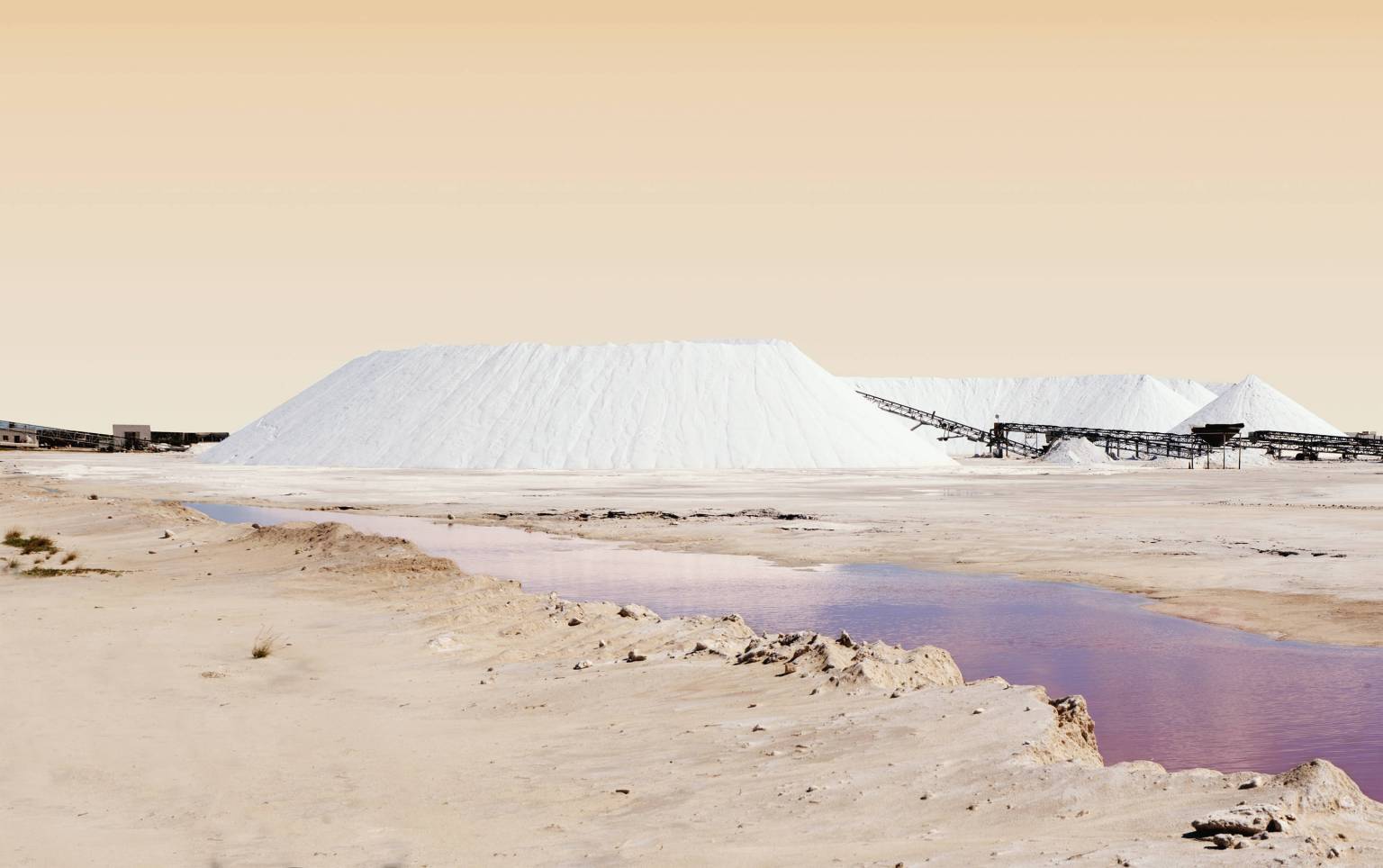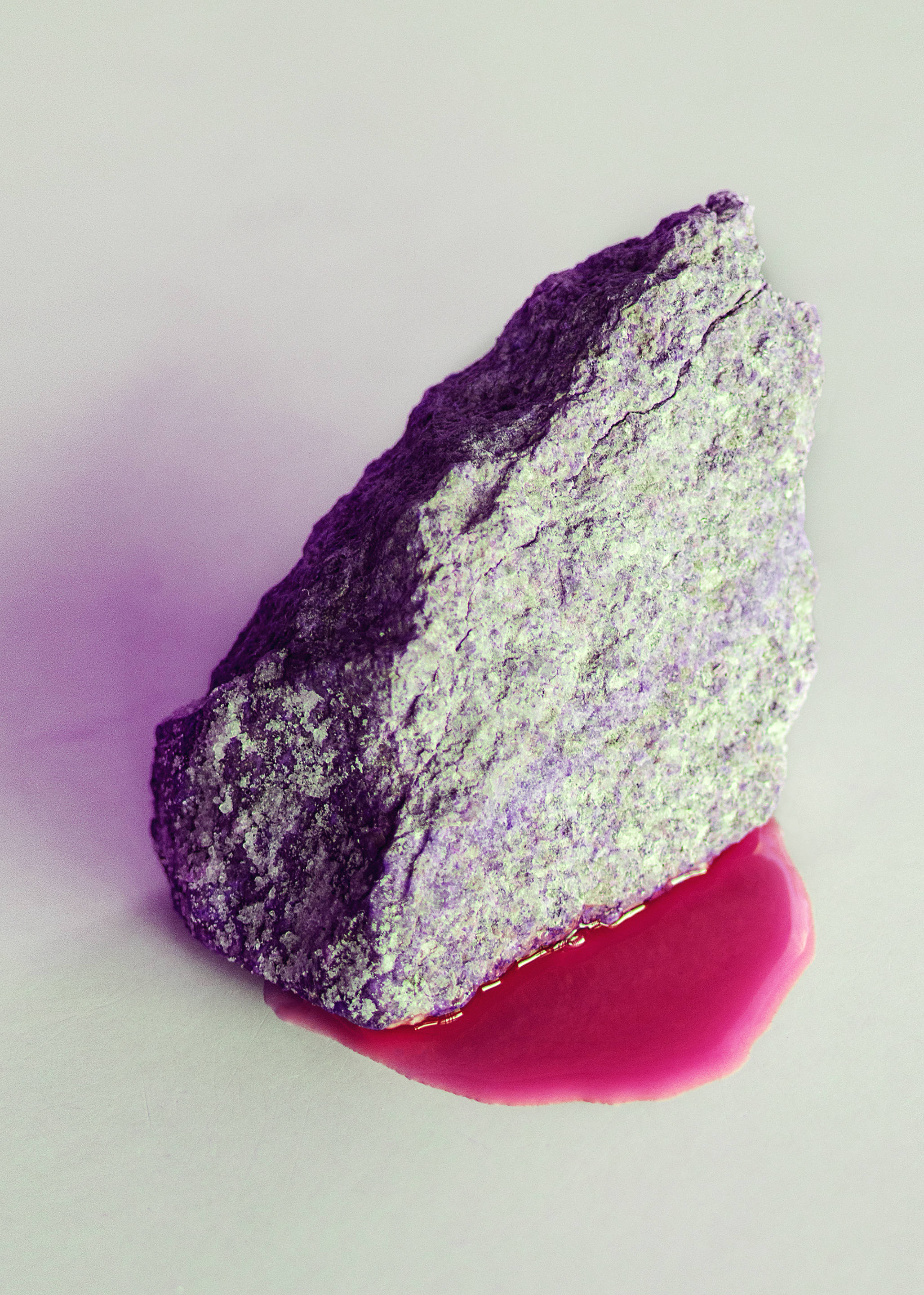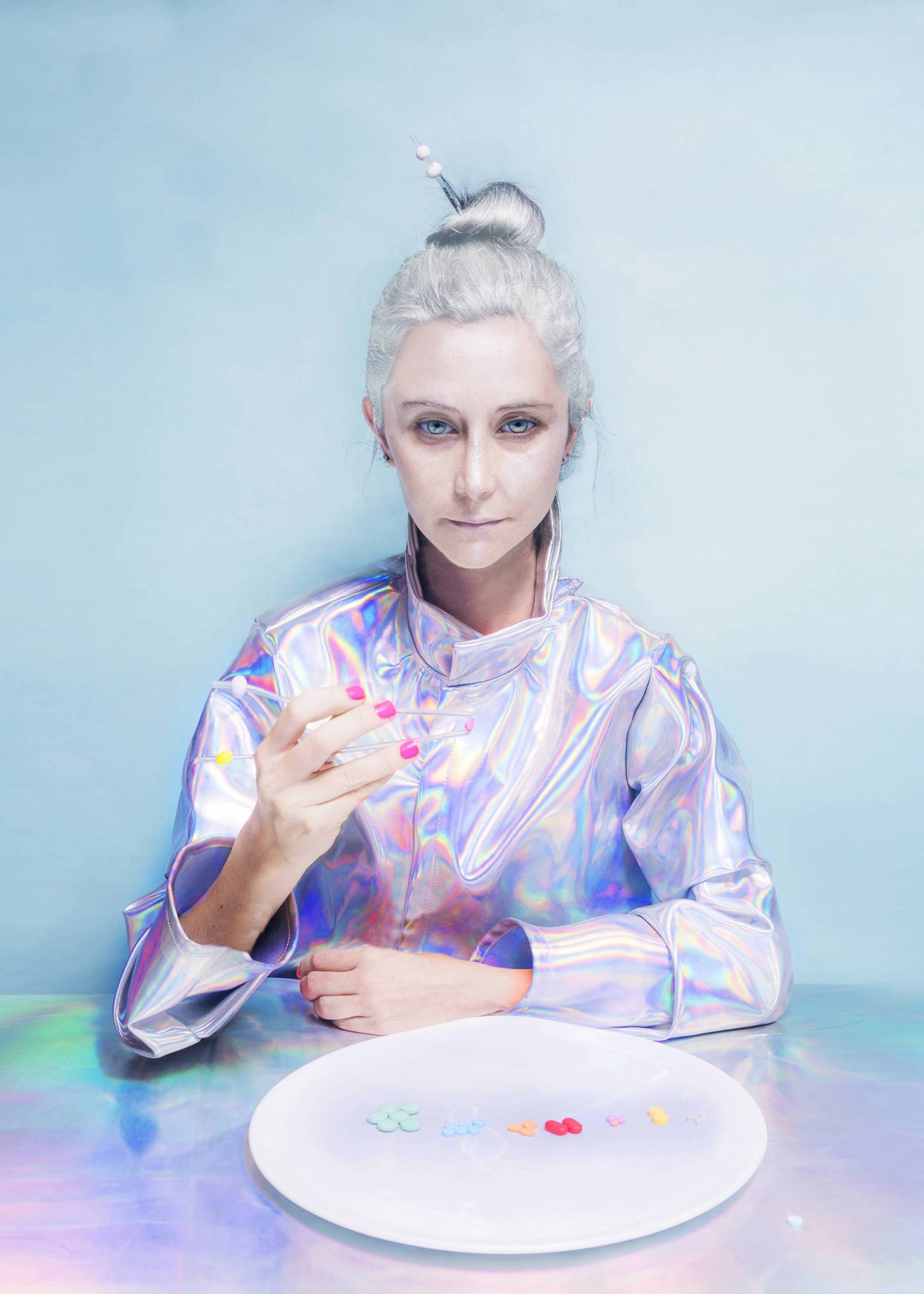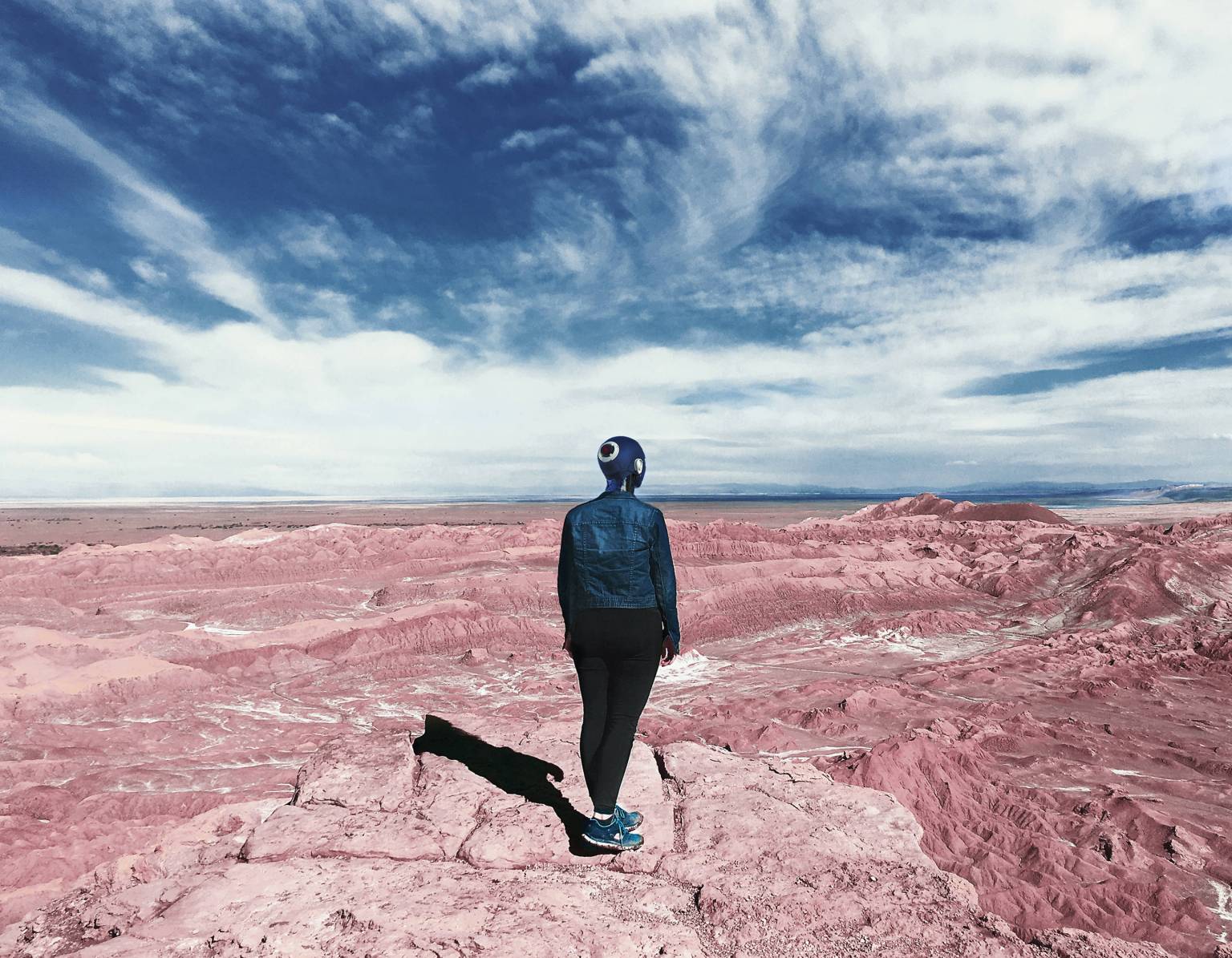
Predicting the End of the World
Playboy examines Fernando Montiel Klint’s vision of near-future dystopia
It’s our natural inclination as humans to improve ourselves. This was long understood as a practical effort, focused around advancing the systems and tools that support us. One would expect this solution-oriented ideology to hold under looming threats of climate change, exploitative capitalism and a mercurial president. But instead, faced with obstacles that seem so vast and impenetrable, we grow fatigued and slowly lose our autonomy. We use paper straws and take social media breaks, mild acts of quasi-resistance that hardly scour the surface.
Fernando Montiel Klint’s ongoing DISTOPIA photo series exaggerates our submission, set in a post-civilization near-future, a techno-dystopia. Beautiful humanoids stand in our place, carefully engineered for this new reality. They look ageless, cloaked in iridescent pinks and blues. Their eyes are pale and vacant, but their gaze reads intense and expectant. There’s a silver-haired woman, wielding chopsticks over plate of colorful pills. A cyborg wears a silver hooded rain jacket, exposing only its face. One portrait leaves the impression of a futuristic fashion pictorial. Its subject appears genderless with windswept blond hair and baby pink lips, wearing only a metallic choker and a computer chip planted in their bare chest.

“My interest is in the return to the origin of humanity,” Klint tells me. “I address the return to the past within the future, vestiges of what are present today but in the future will be ruins, as are now the great Mayan cities, Incas or big cities like Los Angeles, or Mexico City.”
“I believe that the landscape as a site of exploration and introspection, DISTOPIA is located at the ends of the earth, places where one is generally disconnected from the world, interconnection does not exist and that allows me to be at peace from the oversaturation of visual and audio that invades us every second. A pass through real dystopian places, full of fabrics in the middle of nowhere.”
DISTOPIA sees a future plagued by rabid optimization at the stake of organic life, a society where the tech giants have grown too big and powerful for us to dismantle. We are commodities, unquestioning apparatuses serving the entities that rob us of our privacy and individuality. By merging with our machines, as Klint demonstrates, we adopt their planned obsolescence, constantly requiring upgrades and replacements. But the photographs have an alluring sheen, the surface-level beauty that continues to guide and cushion our surrender.
“We live the change generated by the digital, global behaviors defined by communication platforms,” Klint continues. “Where we stop recognizing ourselves and getting to know each other organically.”
The horror isn’t that the world is ending, it’s that we’re going to have to continue living in it.


The short film outlines strategies for disappearance, including “living in a gated community,” “being a disappeared person as an enemy of the state,” and being “a woman over 50.” This “lesson” plays over shots of architectural renderings of luxury living communities, occupied by computer-generated humans.
Much of contemporary dystopian discourse deals with image and our inability to look beyond it and assess larger issues. Our dependence on image plays into our obsessions— with modifying our brains and bodies, with the immediate gratification of mobile technology. Our sense of self hinges on our access to a privatized digital network, where we trade personal information and privacy for a boundless stream of information and entertainment.

New Era is something like a modern continuation of Gretchen Bender’s multichannel video installations from the ‘80s and ‘90s. But, whereas Aitken aroused a state of anxiety and forced alertness, Bender induced screen fatigue. She sought to expose television’s seductive numbing and brainwashing capabilities by surrounding viewers with omnipresent monitors, flickering live and recorded footage, news segments, scripted shows, horror films, war movies, and commercials.
Bender signaled at mass communication disempowering its viewers, overwhelmed with content and ready to accept entertainment as truth. And our vulnerability has only increased with the pervasiveness of social media and the 24-hour news cycle. Her work was recently shown at Red Bull Arts in New York in an exhibit called So Much Deathless, named after the large-scale video project she was working on until her death in 2004.


His video work Riverboat Song (2017) begins with a boyish cartoon, who booty-pops to Iggy Azalea and drinks his own urine. “I’d like you to understand that I’m not responsible for my rage, but it is instead a response to your correctable defects,” the character says. Throughout the video, he takes the form of a crocodile, chain-smoking rats, and horses. It ends with a slideshow of YouTube clips, including real footage of a white man beating a black youth.
That same year, Wolfson showed his controversial VR piece, Real Violence (2017), at the Whitney Biennial. The 360-degree video simulation begins with a city street and the faint sound of Hanukkah blessings. Wolfson walks on screen and proceeds to bash in another white man’s head.

In the interview, Aili goes on to quote Heidegger’s Being and Time: “Things can show themselves only if we do not attempt to put them into the box of the ideas we make.” But perhaps a more efficient methodology for understanding our modern techno-dystopia can be found in the German philosopher’s 1954 work,The Question Concerning Technology. We are at the whim of modern technology, placed in standing-reserve, as Heidegger puts it. It enslaves and distracts us from “the call of a more primal truth.” But, through art, he argues, we can begin to re-orient ourselves.






